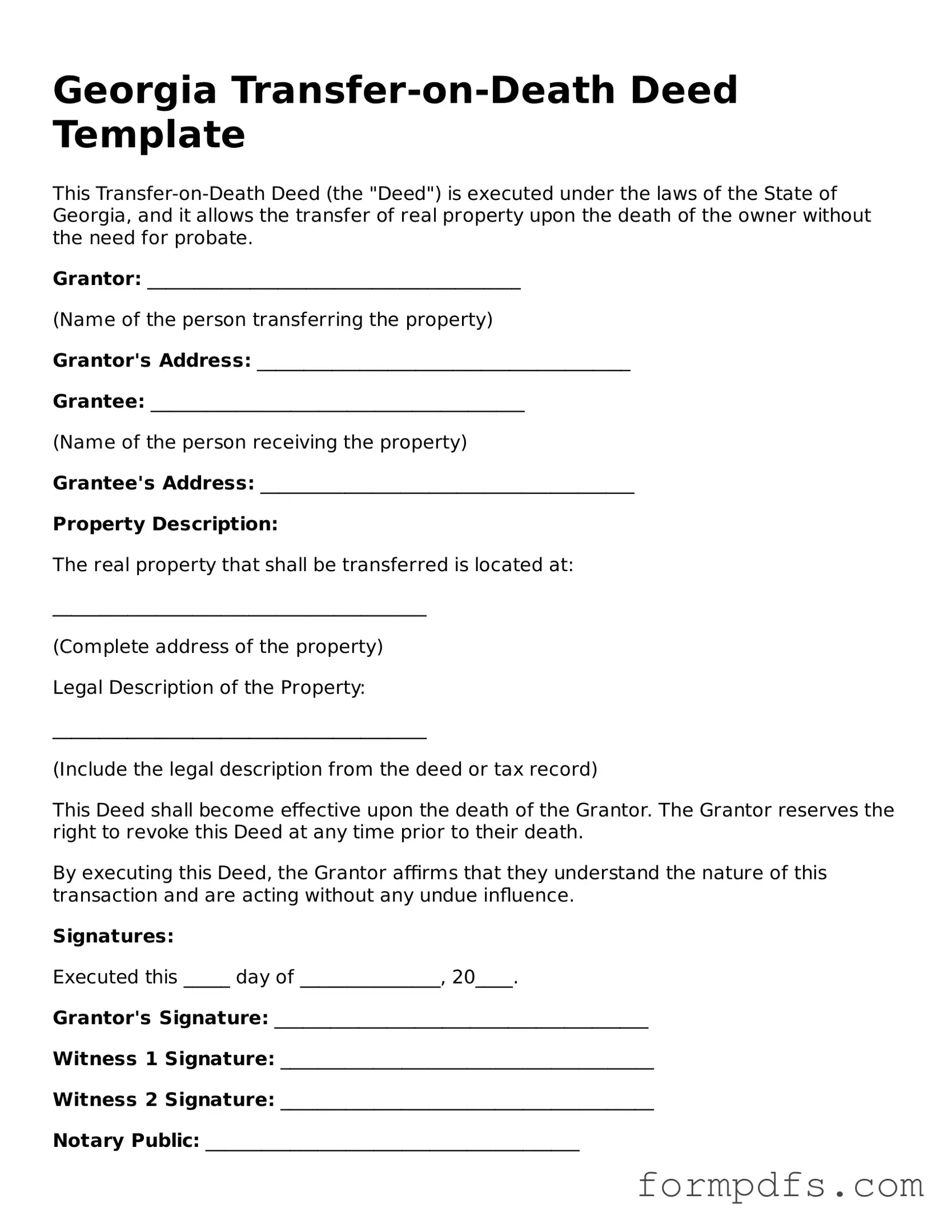What is a Transfer-on-Death Deed in Georgia?
A Transfer-on-Death Deed (TODD) is a legal document that allows an individual to transfer real property to a designated beneficiary upon the owner's death. This deed avoids probate, simplifying the process of transferring property to heirs. It is particularly useful for individuals looking to ensure their property passes directly to their chosen beneficiaries without court involvement.
Who can create a Transfer-on-Death Deed?
Any individual who holds title to real property in Georgia can create a Transfer-on-Death Deed. This includes homeowners and property owners, as long as they are of legal age and mentally competent to make such decisions. Additionally, the property must be located in Georgia for the deed to be valid under state law.
How do I complete a Transfer-on-Death Deed?
To complete a Transfer-on-Death Deed, the owner must fill out the form with relevant information, including the property description and the names of the beneficiaries. It is crucial to ensure that all details are accurate and complete. After filling out the form, the owner must sign it in the presence of a notary public to make it legally binding.
Is it necessary to record the Transfer-on-Death Deed?
Yes, recording the Transfer-on-Death Deed with the appropriate county clerk's office is essential. This step makes the deed a matter of public record, which is important for ensuring the transfer of property occurs smoothly after the owner's death. Failure to record the deed may result in complications during the transfer process.
Can I revoke a Transfer-on-Death Deed?
Yes, a Transfer-on-Death Deed can be revoked. The property owner may revoke the deed at any time before their death. This can be done by executing a new deed that explicitly states the revocation or by recording a formal revocation document with the county clerk's office. It is advisable to consult with a legal professional when revoking a deed to ensure compliance with state laws.
What happens if the beneficiary predeceases the property owner?
If the designated beneficiary dies before the property owner, the Transfer-on-Death Deed will typically become void unless the deed specifies alternate beneficiaries. In such cases, the property may pass according to the owner’s will or, if there is no will, according to Georgia's intestacy laws.
Are there any tax implications associated with a Transfer-on-Death Deed?
Generally, a Transfer-on-Death Deed does not trigger any immediate tax implications for the property owner. However, beneficiaries may be subject to capital gains taxes upon the sale of the property after the owner's death. It is advisable for both property owners and beneficiaries to consult a tax professional to understand potential tax liabilities.
Can multiple beneficiaries be named in a Transfer-on-Death Deed?
Yes, property owners can name multiple beneficiaries in a Transfer-on-Death Deed. The deed should clearly specify how the property will be divided among the beneficiaries. If the deed does not provide specific instructions, the property may be divided equally among all named beneficiaries.
What types of property can be transferred using a Transfer-on-Death Deed?
A Transfer-on-Death Deed can be used to transfer various types of real property, including residential homes, commercial properties, and vacant land. However, it cannot be used for personal property such as vehicles or bank accounts. Only real estate interests are eligible for transfer under this deed.
Do I need a lawyer to create a Transfer-on-Death Deed?
While it is not legally required to have a lawyer to create a Transfer-on-Death Deed, seeking legal advice is recommended. A legal professional can provide guidance on the implications of the deed, ensure that it complies with state laws, and help avoid potential issues in the future.
